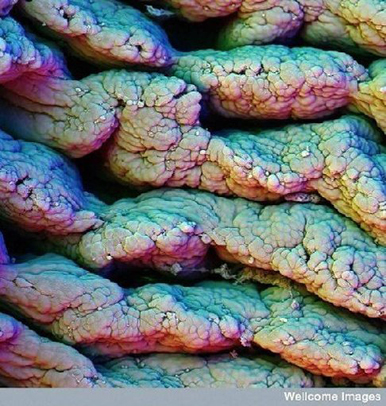1. Red Blood Cells
They look like little cinnamon candies here, but they're actually the mostcommon type of blood cell in the human body - red blood cells (RBCs). These biconcave-shaped cells have the tall task of carrying oxygen to our entire body; in women there are about 4 to 5 million RBCs per micro liter (cubic millimeter) of blood and about 5 to 6 million in men. People who live at higher altitudes have even more RBCs because of the low oxygen levels in their environment which is why some athletes train in high altitudes.
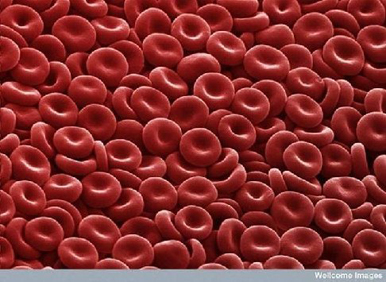
2. Split End of Human Hair
Regular trimmings to your hair and good conditioner should help to prevent split ends, and the smoothing of our hair.
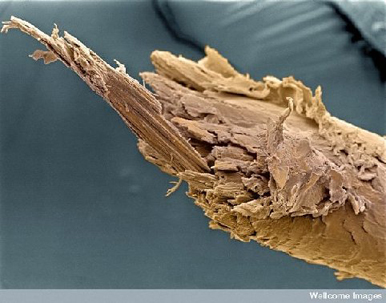
3. Purkinje Neurons
Of the 100 billion neurons in your brain. Purkinje (pronounced purr-kin-jee) neurons are some of the largest. Among other things, these cells are the masters of motor coordination in the cerebellar cortex. Toxic exposure such as alcohol and lithium, autoimmune diseases, genetic mutations including autism and neurodegenerative diseases can negatively affect human Purkinje cells. Exercise, especially aerobic exercise which Lynn suggests should be done for at least a half an hour four or five times a week plus a healthy diet that includes a wide variety of foods are essential in keeping these beautiful, incredible neurons healthy.
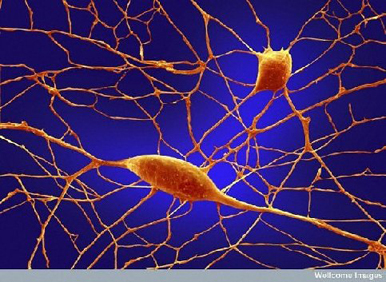
4. Hair Cell in the Ear
Here's what it looks like to see a close-up of human hair cell stereo cilia inside the ear. These detect mechanical movement in response to sound vibrations. For cosmetic reasons, cutting hairs that grow outside the ear or even from the ear when one ages does nothing to affect hearing.
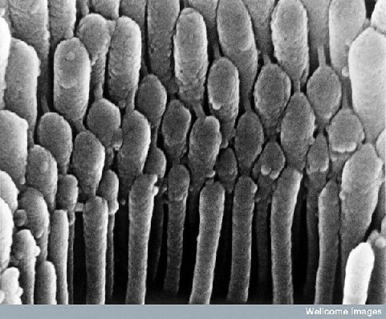
5. Blood Vessels Emerging from the Optic Nerve
In this image, stained retinal blood vessels are shown to emerge from the black-colored optic disc. The optic disc is a blind spot because no light receptor cells are present in this area of the retina where the optic nerveand retinal blood vessels leave the back of the eye.
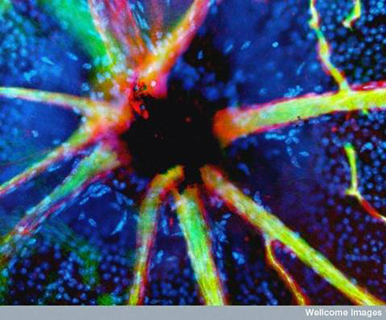
6. Tongue with Taste Bud
This colour-enhanced image depicts a taste bud on the tongue. The human tongue has about 10,000 taste buds that are involved with detecting salty, sour, bitter, sweet and savory taste perceptions. Lynn reminds us that smoking destroys these cells as does alcoholism.
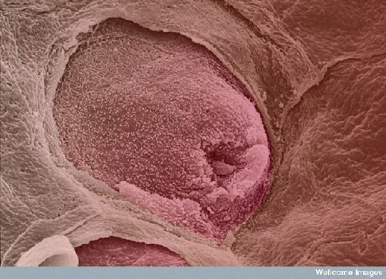
7. Tooth Plaque
Brush your teeth often, once or twice a day (if more often use a soft brush and no paste) because this is what the surface of a tooth with a form of corn-on-the-cob plaque looks like. It isn't necessary to use a gritty toothpaste which over time destroys the enamel.
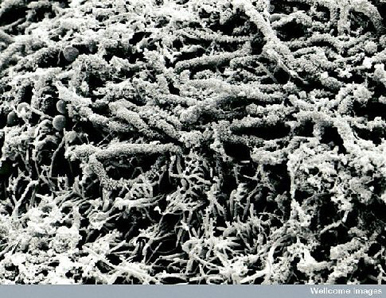
8. Blood Clot
Remember that picture of the nice, uniform shapes of red blood cells you just looked at? Well, here's what it looks like when those same cells get caught up in the sticky web of a blood clot. The cell in the middle is a white blood cell. Eating a diet low in cholesterol which is only in animal products and especially low in saturated fats, along with aerobic exercise keeps the arteries more clear so any clots can pass through more easily. Lynn's eating plans are very low (as defined by the FDA) in both cholesterol and saturated fats.
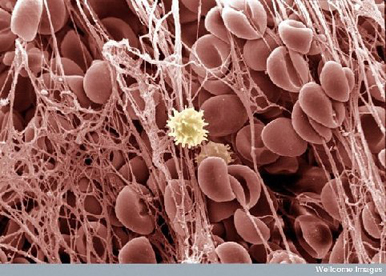
9. Alveoli in the Lung
This is what a colour-enhanced image of the inner surface of your lung looks like. The hollow cavities are alveoli; this is where gas exchange occurs with the blood. Smoking destroys the alveoli which often leads to emphysema as well as lung cancer.
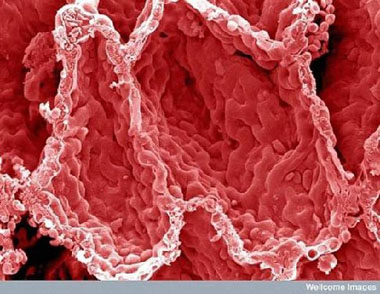
10. Lung Cancer Cells
This image of warped lung cancer cells and darkened healthy tissue, is in stark contrast to the healthy lung in the previous picture.
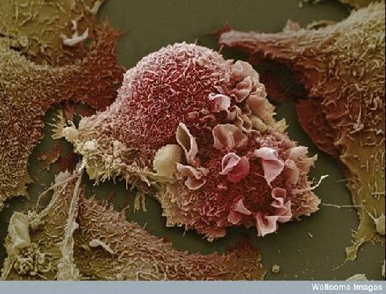
11. Villi of Small Intestine
Villi in the small intestine increase the surface area of the gut, which helps in the absorption of food. Look closely and you will see some food stuck in one of the crevices. Getting the tests you need to stay healthy, such as a colonoscopy, can detect the beginnings of colon cancer resulting in a preventable death.
